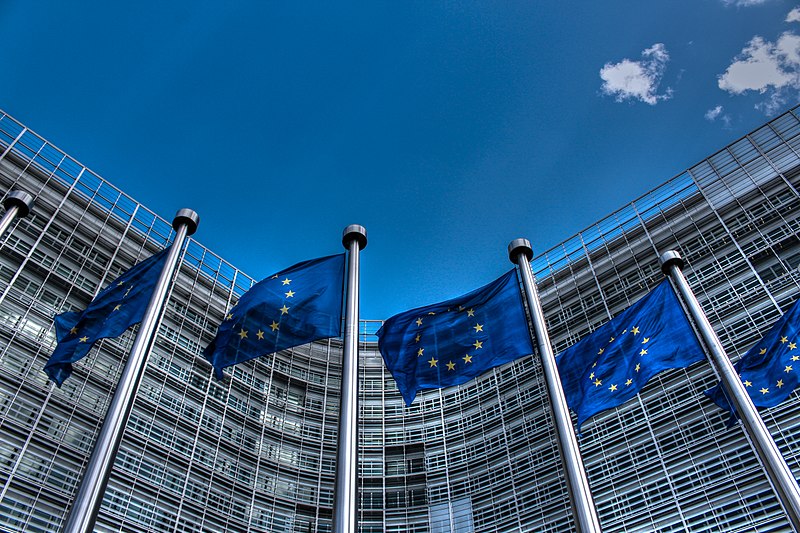The lead candidate, or so-called Spitzenkandidaten procedure, is posing something of a conundrum to its proponents.
Its core problem – namely that member states do not buy into it – won’t be solved by any of the reform ideas that have recently been floated. In all likelihood, Heads of State and Government will grudgingly agree to continue the process in the European Parliament (EP) elections in 2019. But crucially they will not promote it towards their citizens, which is necessary if the system is to work.
The experience of 2014
The procedure to appoint the President of the European Commission was turned on its head in 2014. Instead of backroom dealing among European leaders, as before, European voters could determine the head of the EU’s executive from among candidates pre-selected by the EP’s political groups. 1 In a rather clever manoeuvre, the European Parliament launched the lead candidate system by exploiting the vague wording of the Lisbon Treaty on this point, which prescribes that the European Council take “into account the elections to the European Parliament” (Article 17(7) TEU). By publicly branding this system as the most democratic way to proceed, in political terms it forced the Heads of States and Governments to act on it. When introducing the lead candidate process, the hope was that this would raise citizens’ awareness and interest in European issues and elections – ultimately drawing more of them to the ballot box to counteract the constant downward slide in voter turnout at EP elections.
Despite this initiative, voter turnout at the 2014 EP elections hit an all-time low. Since the first direct election in 1979, turnout has gradually fallen from about 62% to 42.61%. 2 In 2014, it was even lower than before the new system, in the elections of 2009. The Commission made the point that although the downward trend was not arrested, the system had nevertheless “helped in stemming its fall” – but a less sharp decline can hardly be presented as achievement.
The experiment showed that the lead candidates remained largely unknown to citizens in member states. European Commission research on previous EP elections suggests that national parties have made little effort to promote EU topics and elections and that the link between national and EU party politics has been weak. 3 The German case is exemplary here: the Christian Democrats posted Angela Merkel’s face on the campaign billboards even though she was not a candidate. How can the lead candidate system raise awareness if people don’t even know who is standing for election? It is not unknown that national players make the EP election about themselves; the lead candidate system does not seem to have changed that.
In the same vein, an in-house study by the EP revealed that only 5% of voters in 2014 indicated that to “influence the choice of the President of the European Commission” was the main motivation behind their vote. 4 This is hardly surprising because the lead candidate process came into being rather hurriedly and was clearly beset by teething troubles. The election campaign was an immature one that allowed little time to create visibility for the candidates or the election itself.
Prospect for 2019
Member states still appear to be unconvinced by the lead candidate process. French President Macron (although usually keen to introduce more democracy into the EU machinery) is on record as saying that it allows the big European party families a power that was traditionally exercised by elected national leaders in the European Council. Informally, his opposition probably comes from the fact that this procedure is likely to allocate the post to a member of one of the big traditional parties.
Social-democratic leaders in member states fear that conservatives would gain the Commission president post because the Socialists and Democrats (S&D) are traditionally the runners-up at EP level and their national counterparts have been in steady decline in national elections around Europe. Even conservative leaders hold objections because they see this system as a European Parliament power grab and would prefer to nominate the Commission president in the European Council.
For their part, the European Commission5 and the European Parliament6 support the lead candidate procedure for the upcoming elections in 2019. The Parliament even announced that it would not accept any candidate who did not run as a lead candidate. As in 2014, in this institutional turf war, reluctant Heads of State and Government seem to have little political room to deviate from it. It is simply easier to make a public case for than against the lead candidate system – in the name of democracy.
Its intrinsic problem
The main problem with the lead candidate system is the disconnect between the EU and its citizens. Discussion about the system does not take place at the level intended: it is largely a debate among political elites. The ambition was for more democracy, but in fact most citizens have never even heard of the term Spitzenkandidaten. The fact that it is (so far) coined in German does not help its communication across the EU. Only with sufficient public outreach can the lead candidate system boost democratic legitimacy.
Citizens do not seem to be more aware or more interested in EP elections since the lead candidate system came into being, or in the fact that they have a say in who will be the next European Commission president. The lead candidate procedure, as with all institutional reform ideas, is not an end in itself. It does not provide added value as such; it must deliver concrete results.
Some of the system’s fledgling setbacks from 2014 can be addressed in the next run, with more time. To create more genuinely ‘European’ and less second-order national elections, several things need to be done, which were outlined by the Commission on February 14th . 7 First, encourage the political party groups to select their lead candidates and kick off the election campaigns earlier, to allow more time for voters to familiarise themselves with the process and the candidates. Early selection could allow for intensive campaigning of the lead candidates across the EU, ideally in all member states.8 Second, improve the visibility of the link between European party families and their national counterparts, to make people understand that this is not about national politics. In this vein, national parties should boost the profile of candidate MEPs, not just their national MPs or leaders. Third, trigger the public transmission of political debates across all member states to make the elections, topics and candidates more known to voters.
Efforts to improve the system are legitimate, but expectations must be managed. There is only so much the EU institutions can do. Most of these reform ideas address national governments or national parties. Their role as facilitator is crucial to generate serious and robust outreach to the citizens. This comes back to a systemic problem: if the lead candidate system continues, it will be based on political pressure (from the Commission and the European Parliament) – not on the true willingness of member states. And how can support for that system and the promotion of it vis-àvis citizens be expected of leaders if they don’t back it? This is the intrinsic conundrum of the lead candidate system. It is also the reason why, despite the increased promotional efforts of EU stakeholders, it will probably make little difference to the 2019 elections.


